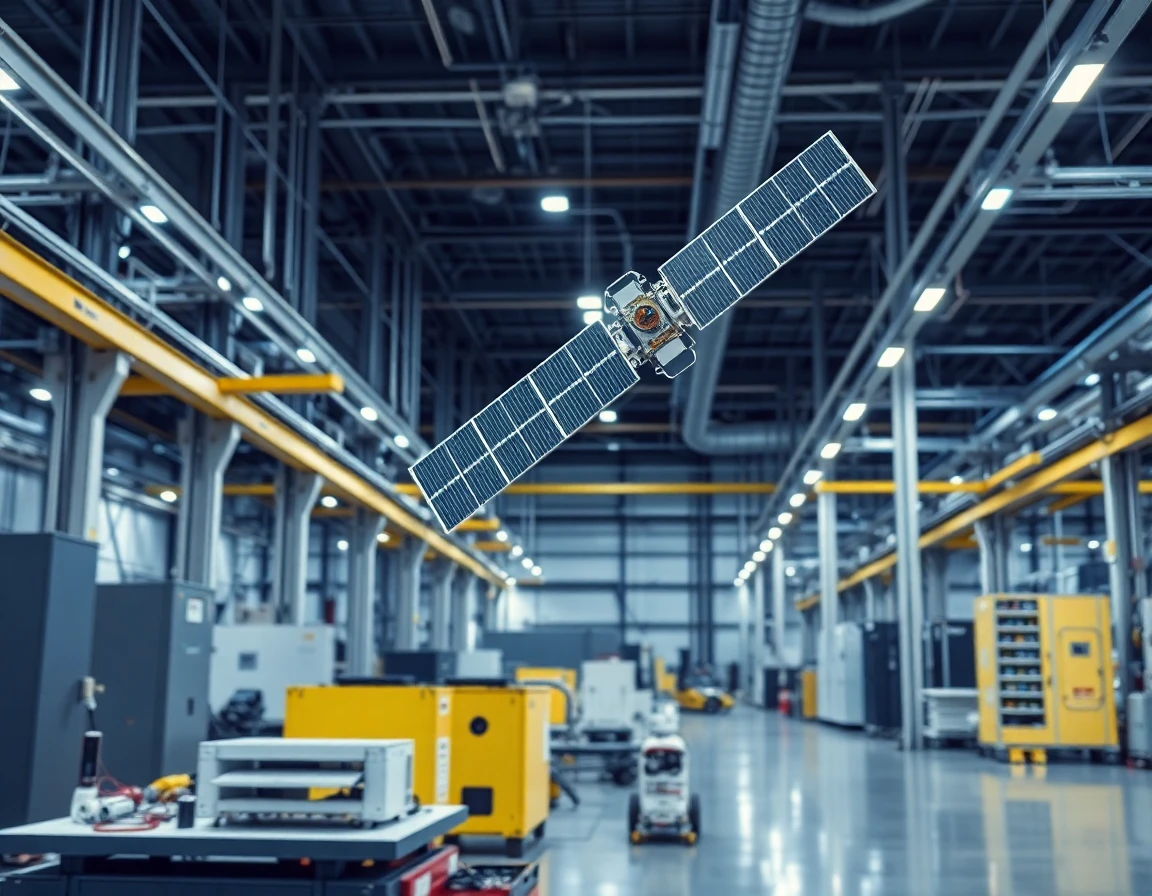In recent years, satellite constellations have emerged as a transformative technology, reshaping global communications and internet accessibility. These networks of multiple satellites working in concert are set to redefine how information is transmitted across the globe, especially in underserved and remote areas.
Understanding Satellite Constellations
A satellite constellation consists of a group of satellites that work together to provide coverage over specific regions of the Earth. Unlike traditional single-satellite systems, constellations ensure more reliable connectivity by offering overlapping coverage and reduced latency. This framework is particularly essential for applications requiring real-time data transmission, such as telecommunication, navigation, and Earth observation.
Technical Specifications and Innovations
Leading companies like SpaceX with its Starlink project, Amazon’s Project Kuiper, and OneWeb are at the forefront of deploying large-scale satellite constellations. For instance, SpaceX aims to deploy up to 42,000 satellites by the mid-2020s, significantly increasing the number of satellites currently in orbit and enhancing broadband internet access worldwide.
Each satellite in these constellations typically operates in low Earth orbit (LEO), around 550 kilometers above the Earth, which minimizes latency and maximizes data transfer speeds. The satellites are equipped with advanced technologies such as phased array antennas and optical communication systems, which are crucial for effective data transmission.
An example of an innovative technology that supports these advancements is the DBY011550M System, a lithium niobate optical chip. This optical chip integrates essential components like polarizers, splitters, and phase modulators, enhancing the capabilities of satellite communications systems within these constellations. Such technologies are vital for ensuring that the growing demand for high-speed data is met efficiently.
The Impact on Global Communications
The deployment of satellite constellations is expected to bridge the digital divide, particularly in remote and rural areas where traditional internet infrastructure is lacking. According to a report by the International Telecommunication Union (ITU), approximately 3.7 billion people remain unconnected to the internet, primarily in developing nations. Satellite internet services can provide these communities with vital access to information and services that enhance education, healthcare, and economic opportunities.
Expert Perspectives
Dr. Emily Foster, a satellite communications expert at the Space Research Institute, states, “The advent of satellite constellations is a game-changer for global communications. We are not only looking at faster internet speeds but also at unprecedented access to information for millions of people across the globe.”
Industry experts also highlight the potential for satellite constellations to enhance disaster response efforts. In the aftermath of natural disasters, traditional communication networks often fail, leaving affected areas isolated. Satellite networks can provide crucial connectivity for emergency services, enabling faster response times and more effective support for communities in need.
Future Developments and Challenges
While the prospects of satellite constellations are promising, several challenges remain. Regulatory hurdles, space debris management, and the need for international cooperation are critical issues that need addressing. The increasing number of satellites in orbit raises concerns about congestion and the potential for collisions, which could jeopardize not just the satellite constellations but also existing satellites and space missions.
Moreover, as the technology evolves, it will be essential for companies to ensure that the services are affordable and accessible to all demographics. Ensuring cybersecurity in satellite communications also remains a priority, as threats to satellite integrity could compromise the very services they aim to provide.
Conclusion: A Connected Future
As the deployment of satellite constellations accelerates, we stand on the brink of a new era of global connectivity. With advanced technologies like the DBY011550M System playing a pivotal role in enhancing satellite communications, the potential for improved internet access and communication services is immense. The future of satellite constellations not only promises to connect more people but also to foster innovation and economic growth in previously unreachable areas.
In conclusion, the ongoing advancements in satellite constellation technology reflect a broader trend towards a more interconnected and accessible world, paving the way for unprecedented opportunities in various sectors.



